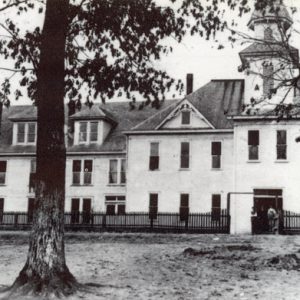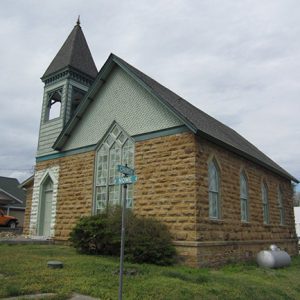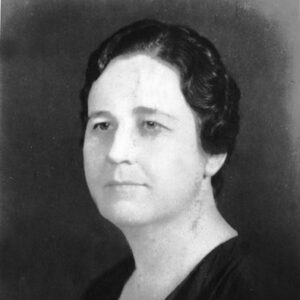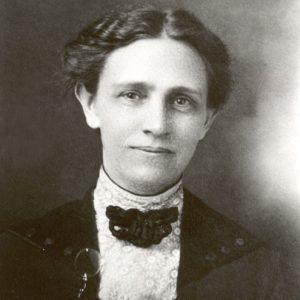calsfoundation@cals.org
Church of the Nazarene
The state of Arkansas was one of the cradles for the early expansion of the Church of the Nazarene, America’s largest Wesleyan-holiness denomination. Nazarenes are evangelical Methodists who emphasize John Wesley’s core preaching, including the conversion of sinners, the sanctification of believers, and the witness of the Holy Spirit to these Christians’ experiences. The Nazarenes grew from the nineteenth-century holiness movement in American Methodism. The denomination was constituted by mergers in 1907 and 1908 of three regional Wesleyan-holiness bodies located on the East Coast, on the West Coast, and in the South. A strong missionary spirit emerged early in Nazarene life; that spirit is the primary reason why the denomination today is global in scope and structure and why over sixty percent of the Church’s 1.7 million members live outside the United States and Canada.
The story of the Church of the Nazarene in Arkansas is unique due to the prominent role of women preachers in its origins and development. The Nazarene presence in the state stems originally from the New Testament Church of Christ, formed in Milan, Tennessee, in 1894 by Methodist revivalist Robert Lee Harris. Harris died soon after, but his work was carried on. His widow, Mary Lee Harris (later Cagle), began preaching in Arkansas in 1895 at revivals, camp meetings, and the penitentiary in Little Rock before moving on to Texas. The more decisive influence was Elliot J. Sheeks, wife of businessman Edwin Sheeks. Traveling from her Memphis home, she conducted revivals and organized churches in Arkansas, Tennessee, and Missouri. With Mary Lee Harris, she was ordained a minister in 1899 at the first annual gathering of the Eastern Council of the New Testament Church of Christ, a delegated meeting representing churches in the three states she served. She organized a mission in Little Rock (Pulaski County) the next year. The corps of preachers—both male and female—multiplied, as did churches and preaching points across Arkansas. The Eastern Council and its counterpart, the Texas Council, became part of a larger southern denomination, the Holiness Church of Christ, in 1905. It merged with the Nazarenes in 1908, and the Arkansas churches were reorganized as the Arkansas District with twenty-eight congregations and over forty ordained ministers. A year later, there were forty-five churches and sixty ordained ministers. The Reverend Sheeks, the Eastern Council’s corresponding secretary, remained Arkansas District secretary through 1915.
Meanwhile a non-denominational holiness camp meeting was held annually in Beebe (White County). Its supporters rallied for the establishment of a school in Vilonia (Faulkner County) headed by Fannie Suddarth, a teacher and principal who established the lower grades in 1900 and later became an ordained minister. A main object of the Arkansas Holiness Association, founded by the Reverend James David Scott (commonly known as Rev. J. D. Scott) in 1904, was to support the school. Upper grades and a college division were added in 1905, and the school was known as Arkansas Holiness College. It became an official Nazarene institution in 1914. Total enrollment in 1920 was over 200. The school spurred Nazarene growth in the state. The Reverend James B. Chapman—a graduate and, later, president of the school—later edited the denominational newspaper and was elected as a Nazarene general superintendent (bishop). J. Waskom Pickett, who taught there, became a noted Methodist missionary and bishop in India. The college merged with Bethany-Peniel College (later Bethany Nazarene College and now Southern Nazarene University) in Oklahoma in 1931.
Early Nazarene growth in Arkansas depended largely on evangelists and home mission pastors. Churches were usually small, so pastors often took charge of several churches arranged in Methodist-style circuits.
Larger congregations eventually developed in the urban centers. Little Rock First Church grew significantly in the 1930s and 1940s under the Reverend Agnes White Diffee, who came to the church as an associate pastor in 1929 and was senior pastor from 1931 to 1949. A native of Greenbrier (Faulkner County), Diffee was a graduate of Oklahoma State Teachers College and a former teacher. She built the membership from 297 to 1,163 and the average Sunday morning worship attendance to over 1,000, sometimes peaking near 2,000. Diffee’s daily devotionals and the Sunday worship services were broadcast across the state on radio station KARK, which Little Rock First Church built and operated. Her following grew so wide that many Arkansans knew the Nazarenes simply as “Sister Diffee’s church.” John L. Peters, a youth in the congregation shaped by her influence, later founded the Christian social-service organization World Neighbors.
Nazarenes were active in the prohibition campaign of the 1910s, and a district prohibition committee reported annually to the district assembly. With the Dallas District as its partner, the Arkansas District also sponsored a maternity home for unwed mothers during those years.
The Church of the Nazarene in Arkansas has been predominantly white. In 1948, the Reverend John Oliver, former district superintendent, addressed Nazarene ministers gathered in Jonesboro (Craighead County) on the failure of white churches to reach out to the black community, yet no concrete results came from this appeal. A new attitude did not develop among Arkansas Nazarenes until after passage of the Voting Rights Act, spurred further in the 1970s by a new denominational emphasis on urban evangelism and social ministries.
Paul Holderfield’s ministry exemplified this. A sharecropper’s son and two-time Arkansas Golden Gloves boxing champ, his ministry of racial reconciliation and outreach was among the poor of North Little Rock (Pulaski County). As a fireman there, he began cooking for the neighborhood youth. Eventually, he fed eighty regularly. His growing vision led in 1972 to the organization of Friendly Chapel Church of the Nazarene, composed mainly of children from a housing project. Holderfield became its pastor in 1976, serving until his death in 1998. Its social ministry center gained national attention. Known as FLAME, it provides a broad range of social services to the immediate community.
The original Arkansas District was divided in 1952, creating the North Arkansas and South Arkansas Districts. The former has its offices in Greenbrier (Faulkner County), the latter in Little Rock. In 2010, over 12,000 Nazarenes in Arkansas worshiped in 102 churches. Eight churches are Hispanic; another describes itself as “multicultural.” The largest congregations are located in Conway (Faulkner County), Hot Springs (Garland County), Little Rock, and Sherwood (Pulaski County).
For additional information:
“Arkansas Holiness College, 1900–1931.” Faulkner Facts and Fiddlings 25 (Spring/Summer 1983): 25–30.
Arkansas District, Church of the Nazarene. Proceedings of the First District Assembly of the Arkansas District Church of the Nazarene, 1908. N.p: Arkansas District Church of the Nazarene, 1908.
Church of the Nazarene. http://www.nazarene.org/ (accessed September 7, 2023).
Gresham, Loren P., and L. Paul Gresham. From Many Came One, in Jesus’ Name: Southern Nazarene University Looks Back on a Century. Virginia Beach, VA: The Donning Company, 1998.
Ingersol, Robert Stanley. “Burden of Dissent: Mary Lee Cagle and the Southern Holiness Movement.” PhD dissertation, Duke University, 1989.
Minutes and Yearbook of the Eastern Council, Holiness Church of Christ, 1907. Pilot Point, TX: Evangel Publishing Company, 1907.
Smith, Timothy L. Called Unto Holiness: The Story of the Nazarenes: The Formative Years. Kansas City, MO: Nazarene Publishing House, 1962.
South Arkansas District Church of the Nazarene. Seventy-fifth Anniversary Yearbook. Little Rock: South Arkansas District, 1983.
Stan Ingersol
Nazarene Archives
Kansas City, Missouri
 Arkansas Holiness College
Arkansas Holiness College  Church of the Nazarene
Church of the Nazarene  Agnes Diffee
Agnes Diffee  Grace Church of the Nazarene
Grace Church of the Nazarene  Paul Holderfield
Paul Holderfield  Elliot Sheeks
Elliot Sheeks 




Comments
No comments on this entry yet.